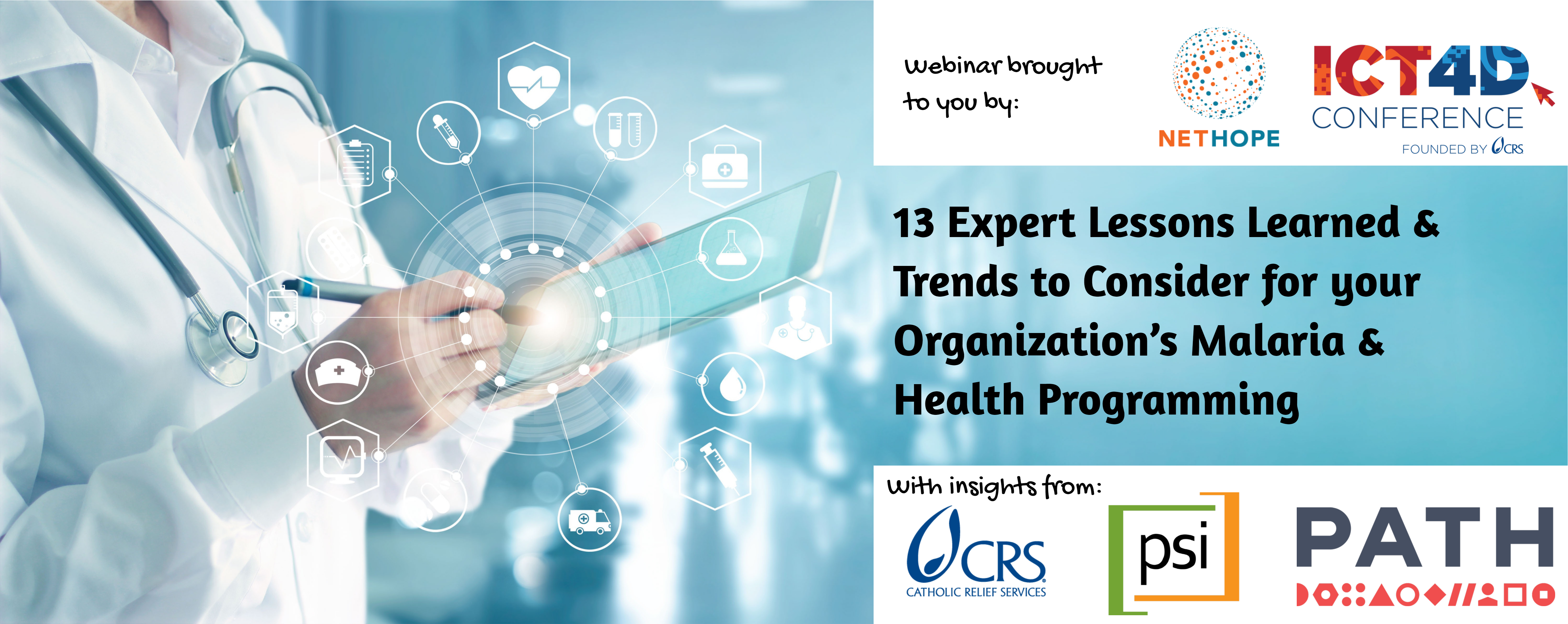
13 Expert Lessons Learned & Trends to Consider for your Organization’s Malaria & Health Programming
Weren’t able to attend the recent webinar on digital tech to support the global malaria response? Don’t worry, we’ve got you covered!
Digital technology is offering cost-effective ways to help address complex health challenges like malaria – whether reaching or training health workers, using mobile tablets for data collection, or setting up digitized data systems for real time monitoring of malaria and ensuring medicines do not run out. The webinar featured Marie-Reine Rutagwera, Strategic Information Advisor – PATH – Zambia; Orezi Nicholas-Adhekoyibo, Senior Manager Vector Control GF Malaria Nigeria – Catholic Relief Services (CRS); and, last but certainly not least, Luigi Nuñez, Digital Health and Monitoring Advisor (Malaria and WASH) – Population Services International (PSI).
Don’t have time to listen to an hour-long recording? Neither do we! That’s why we’ve got some key lessons learned and trends for you to consider for your organization’s malaria programming:
Technical:Â Â
- Leverage existing and ready-to-deploy tools to expedite implantation of QA systems.Â
- Use SMS, WhatsApp, and other forms of communication for distance learning, social behavior change, and training of community health workers, beneficiaries, partners, etc.
- Make use of digital solutions to adapt activities in ways that mitigate touchpoints to protect the spread of diseases and viruses like COVID-19.Â
- Develop visual dashboards to help track malaria cases using data visualization software like Power BI or directly with the national Health Management Information System (HMIS – typically DHIS2).
- If possible, use one digital tool for M&E that has all of your needs, or try and ensure interoperability between multiple tools.Â
- Use AI and Machine learning to better predict stock outs, epidemics, and other necessary needs by programs.Â
Strategic:Â Â
- Assess the quality of your interventions and highlight areas to improve for optimal delivery of the intervention. Getting this data isn’t enough; we need to act on that data!
- Overstock on malaria supplies for up to a year to ensure continued service delivery during supply chain disruptions. The type of disruptions caused by a global pandemic is a great example.Â
- Do a lot more from a distance both globally and domestically. There is much more to be done remotely than we previously thought. Capitalize on this!
- Use virtual and online trainings for colleagues and partners to build capacity for all involved. Something that PSI started doing during the pandemic and plans to continue into the future.Â
- Touchless distribution of ITNs or SMC medications in adherence to safety protocols put in place during the pandemic.Â
- Implement real-time tracking of commodities down to the community level to provide better data to Ministries of Health.Â
- Publicize your tools! Put them on GitHub or on your company website. Share in the various Communities of Practice that exist around digital malaria programming or ICT4D.Â
These 13 trends and lessons learned were gathered from our ICT4D webinar, which also features three cases studies by CRS, PATH, and PSI on different tools applied to support malaria programs, the impact of the pandemic on the global malaria response, and how data can be used to measure the quality of those interventions. Access the full discussion by listening to the recording here!
Paul S. Wiedmaier
ICT4D Knowledge Management & Communications Specialist
Catholic Relief Services (CRS)